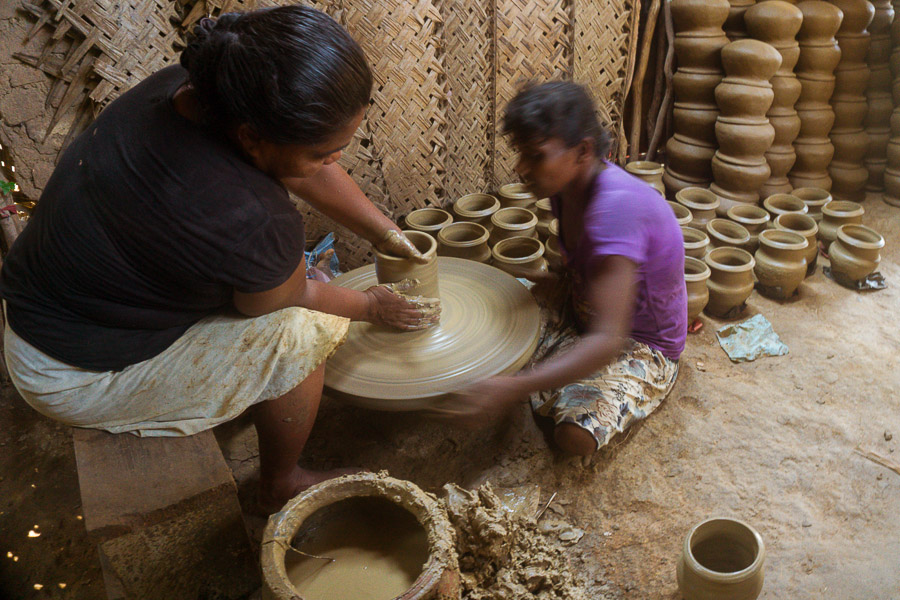Our guesthouse owners gave us ride to Galle from where we caught a local bus to Tangalle. In fact we caught three local buses before we made it there, late in the evening. The following morning we felt the call of the ocean. We walked along the rocky coastal shore between two beaches and absorbed the oceans inspiration: colourful corals, mini lagoons, salt-water fish, gusts of salty breeze, sharp rocks, peculiar crustaceans and the endless expanse of ocean on the horizon.
With our minds and bodies refreshed we began our search for the pottery village we had heard of. It was a sweet adventure to find the small pottery village between Palapota and Beliatta. A tuk tuk driver agreed to drop us a little way inland as he was headed home in the same direction but no sooner had we gotten out of the tuk tuk a friendly passerby stopped to give us a ride on his motorbike. He dutifully helped us by translating and asking villagers along the drive where we would find the potters. Finally we reached the home of a potter family.
Upon entering we found two women paddling the bottoms of traditional ‘muttiya’ pots (round bottomed vessels used customarily for cooking rice). They are thrown with an open base and then paddled into a closed rounded shape once leather hard. It is an interesting method of forming pots.
They welcomed us graciously and after learning that we too are potters, took us excitedly to their wheel where they began to throw a muttiya pot. To our surprise the two women used a hand-turned wheel: one threw and the other manually turned the wheel head.
When it was our turn we quickly felt how much gentler one needs to be with handling the clay and that more water is necessary to ensure the wheel does not slow down too much. It’s a delicate act of balance. The women smiled in disbelief when we made little bowls: we managed to prove ourselves. Pottery is regarded as a low cast occupation in Sri Lanka (and also India) and so they were surprised and happy to see foreigners practicing their craft.
The wheel and the kiln were in the same room or better said a hut: built with wooden sticks and a coconut-thatched roof. The kiln was a simple box kiln. It is fired from underneath on all four sides, in-between the clay buttress type structures. The vessels are loaded from the top into the rectangular kiln space and then sealed in with a mixture of mud and straw. After the firing the mud and straw covering is broken off to reveal the bisqued wares inside.
We returned that evening feeling very privileged and more curious than ever before to discover the pottery traditions of Sri Lanka.

















